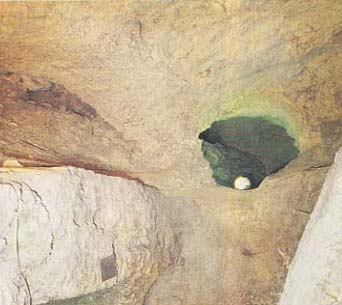Image Details

Garo Nalbandian
No exit. A blocked exit tunnel, leading outside the city wall on the eastern slope of the City of David, begins on a shelf above Warren’s Shaft (it lies out of sight to the right of the man in the cover photo). Until now, archaeologists have suggested that this tunnel was dug to provide a route for the removal of debris from the excavation of the Warren’s Shaft system. Its height above the main passage, however, would have made it difficult to put it to such a use. Furthermore, to create this breach in the city’s defenses would have been unwise (David’s general, Joab, may have used this tunnel to sneak into the Jebusite city); this danger apparently led to the blockage of the tunnel. Geological study now shows this tunnel to be a natural conduit. Water eroded the passage at the boundary of the Meleke limestone and the Mizzi Ahmar dolomite. When water seeping through the porous Meleke limestone reached this level, it encountered greater resistance from the less porous Mizzi dolomite, and so began to move horizontally, cutting through the softer limestone along the boundary and finally exiting on the side of the hill.
